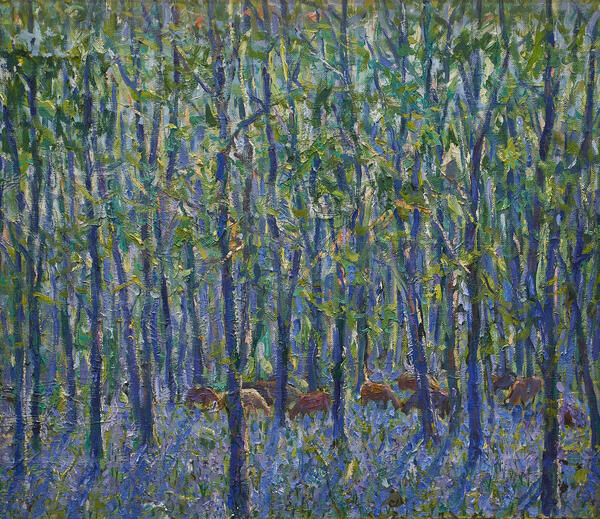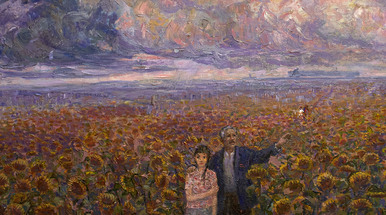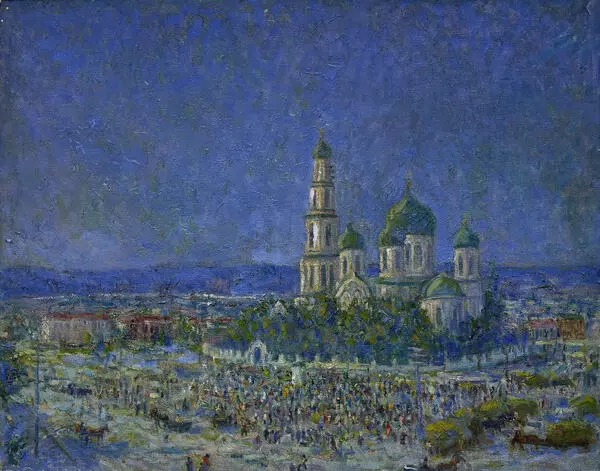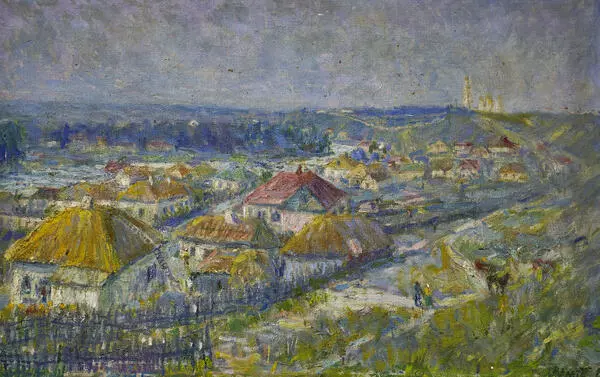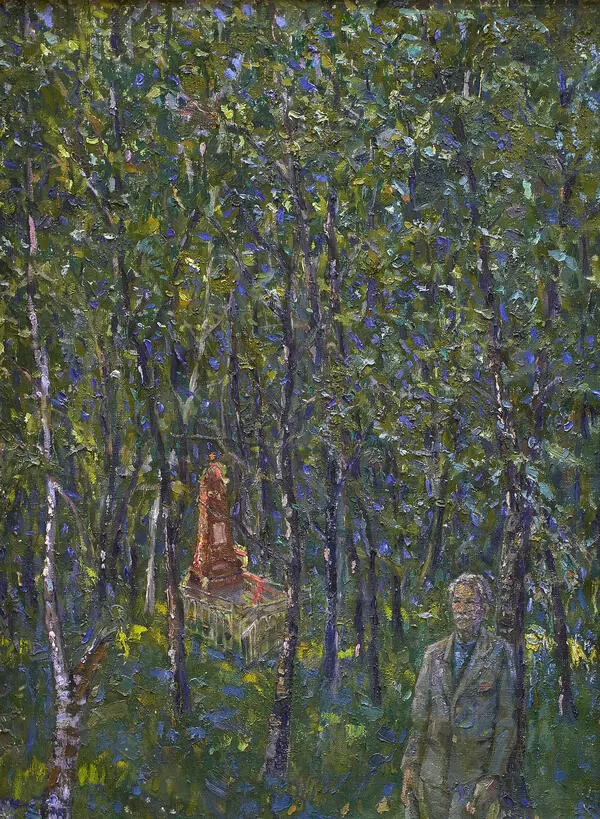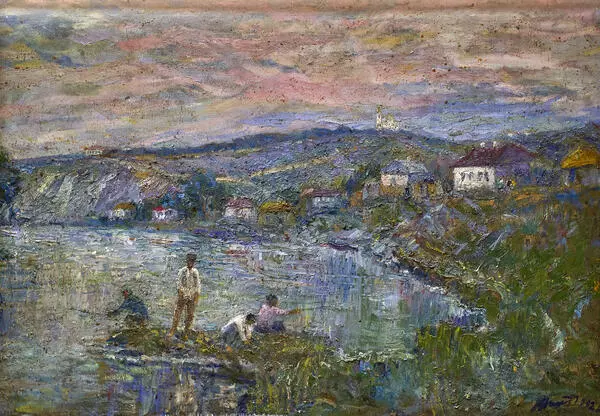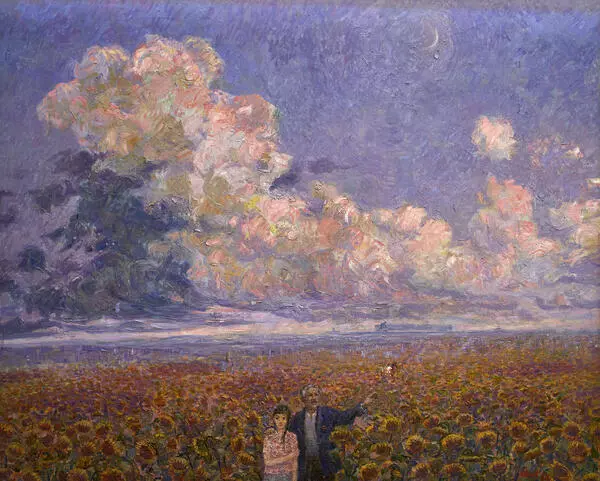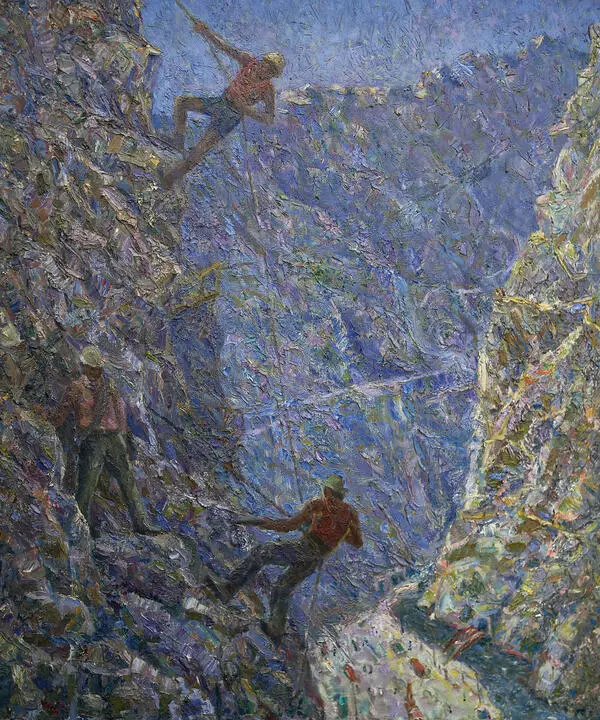Alexander Ignatiev created the ‘Blue spring’ canvas from the exposition of the Valuy Museum of History and Art, People’s Artist of Kyrgyzstan, laureate of the State Prize of the Kyrgyz SSR named after Toktogul. The artist’s paintings are kept in 14 museums in Russia and former Soviet republics, including the State Tretyakov gallery.
The future painter was born in the town of Valuyki, Belgorod region. From early childhood, he sketched his native places and ancient monuments. But most of all, young Ignatiev loved to depict nature, which later influenced his creative path.
In 1924, he graduated from the Valuy school, and after two years, worked as an artist of the local theater — first drama, and then musical comedy. Then he went to Voronezh to enter the local Srt and Pedagogical, technical school. After his graduation, the graduate Ignatiev was sent to the city of Frunze on the call of the People’s Commissariat of the Kyrgyz SSR. There he became involved in constructing the new socialist culture of the Republic and lived for 60 years.
In 1934, the Union of Artists of Kyrgyzstan was established, where Alexander Ignatiev was appointed Deputy Chairman. Together with Russian artists Semyon Chuikov, Vladimir Obraztsov, and the first national representatives of the fine arts of Kyrgyzstan formed in the 1930s, Gapar Aitiev and Sabyrbek Akylbekov, he participated in the organization of the artistic life of the Republic. Ignatiev also developed here the fundamental principles of realistic art and its connection with folklife.
Alexander Ignatiev made a significant contribution to the development of Russian fine arts. Since 1955, he has worked as a member of the Board of the Union of Artists of the Kyrgyz SSR and a member of the State Expert Commission under the Ministry of Culture of the Republic. On his initiative, Alexander Ignatiev organized the national Museum of fine arts in his native city of Valuyki, which is now known as the Valuy Museum of History and Art.
Every year Alexander Ignatiev returned to the town of his childhood, Valuyki. He not only paid a kind of tribute to his native land but also felt an inner need to see, feel, and recall the unforgettable impressions of his youth. The artist reflected his thoughts and feelings that these trips evoked in him in sketches and paintings. This list also includes the “Blue Spring.”
The picture tells about the beauty of the Valuy spring forest. The picturesque surface and bright structure of the canvas sparkles with color bursts. Ignatiev did not like calm, well-established, and specific light-color characteristics. He sought to embody the image of nature in its transitional state.
In the picture, the artist used all means of his art to reflect the triumph of nature’s forces at the moment of their full self-manifestation. He used one of the impressionistic principles of color solutions - pictorial and emotional transmission of reality.
The future painter was born in the town of Valuyki, Belgorod region. From early childhood, he sketched his native places and ancient monuments. But most of all, young Ignatiev loved to depict nature, which later influenced his creative path.
In 1924, he graduated from the Valuy school, and after two years, worked as an artist of the local theater — first drama, and then musical comedy. Then he went to Voronezh to enter the local Srt and Pedagogical, technical school. After his graduation, the graduate Ignatiev was sent to the city of Frunze on the call of the People’s Commissariat of the Kyrgyz SSR. There he became involved in constructing the new socialist culture of the Republic and lived for 60 years.
In 1934, the Union of Artists of Kyrgyzstan was established, where Alexander Ignatiev was appointed Deputy Chairman. Together with Russian artists Semyon Chuikov, Vladimir Obraztsov, and the first national representatives of the fine arts of Kyrgyzstan formed in the 1930s, Gapar Aitiev and Sabyrbek Akylbekov, he participated in the organization of the artistic life of the Republic. Ignatiev also developed here the fundamental principles of realistic art and its connection with folklife.
Alexander Ignatiev made a significant contribution to the development of Russian fine arts. Since 1955, he has worked as a member of the Board of the Union of Artists of the Kyrgyz SSR and a member of the State Expert Commission under the Ministry of Culture of the Republic. On his initiative, Alexander Ignatiev organized the national Museum of fine arts in his native city of Valuyki, which is now known as the Valuy Museum of History and Art.
Every year Alexander Ignatiev returned to the town of his childhood, Valuyki. He not only paid a kind of tribute to his native land but also felt an inner need to see, feel, and recall the unforgettable impressions of his youth. The artist reflected his thoughts and feelings that these trips evoked in him in sketches and paintings. This list also includes the “Blue Spring.”
The picture tells about the beauty of the Valuy spring forest. The picturesque surface and bright structure of the canvas sparkles with color bursts. Ignatiev did not like calm, well-established, and specific light-color characteristics. He sought to embody the image of nature in its transitional state.
In the picture, the artist used all means of his art to reflect the triumph of nature’s forces at the moment of their full self-manifestation. He used one of the impressionistic principles of color solutions - pictorial and emotional transmission of reality.

